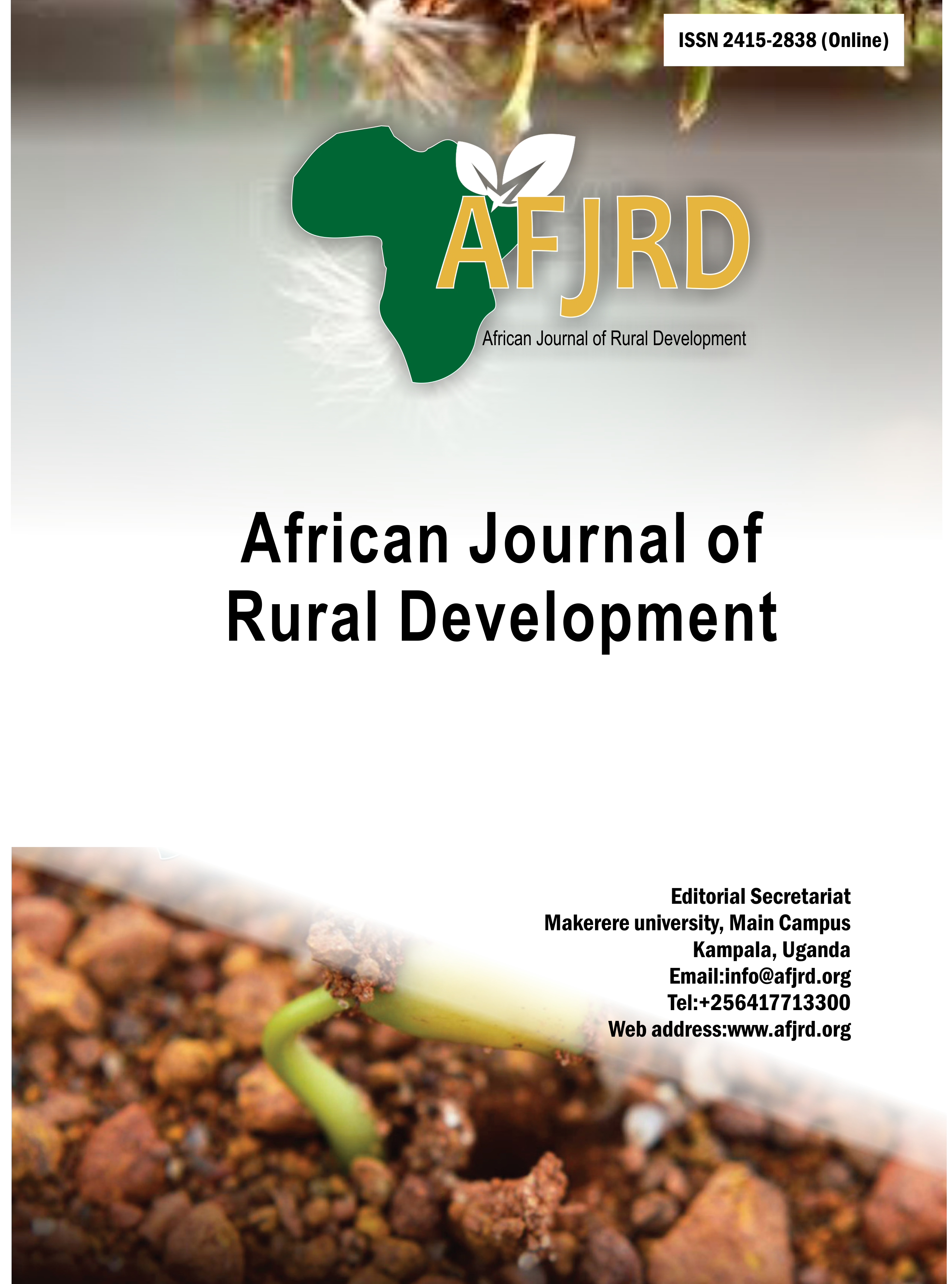Integration of Tied Ridges and Fertilizer Use Enhance Water and Nitrogen Use Efficiencies for Maize Production in Semi-Arid Lands
Main Article Content
Abstract
Low maize (Zea mays L.) production in arid and semi-arid lands (ASALs) has been attributed to inadequate soil moisture and declining soil fertility. This could be improved through enhanced water use efficiency (WUE) and nutrient use efficiency (NUE). During the short rain (SR) seasons of 2013 and 2014, a study was conducted at Kenya Agricultural and Livestock Research Organization (KALRO) – Katumani Research Station to monitor WUE, NUE and grain yield in maize production. A 2*2*4 factorial trial of cropping seasons, soil moisture conservation (tied versus untied ridging) and fertilizer types (control, CAN, FYM, CAN + FYM were set up in a Randomized Complete Block Design (RCBD). Interaction between tied ridged and FYM application had the largest WUE at 3.23 kg mm-1 ha-1. On average, maize yields were 21% higher in 2013 than in 2014 SR. FYM in tied ridges resulted in larger yields (294kg ha-1) compared to untied ridges (152kg ha-1. FYM (5.12 kg grain-1 kg N-1) and CAN (4.72 kg grain-1 kg N-1) plots under tied ridges had the largest NUE. Application of FYM in combination with CAN and tied ridges seemed to be the best bet for increased maize yields through enhancing both NUE and WUE.
Article Details

This work is licensed under a Creative Commons Attribution 4.0 International License.
